Don't wanna be here? Send us removal request.
Text
Week 12
What were your success and failures?
I found that I was able to capture some more natural looking positions with hands this week. I am struggling to decide exactly what I want to convey in my series, but I am definitely seeing improvements and feel like I am getting a step closer to figuring out what will make a really interesting and cohesive series. So far, I have a few images of hands doing different actions, such as shooting a pool ball holding a pool stick. I also have more natural looking images of hands, not doing anything posed but just shown as they are. These two types of photos are different and don’t necessarily go together, so I think choosing the series that is stronger and really perfecting that is my biggest challenge ahead.
What are the issues and ideas that are motivating your work this week?
I would still like to get into the studio at some point to try playing with the studio lighting. The studio is still a little intimidating to me, but I think experimenting will be a good next step for my final photo assignment. Just getting a person’s hands in a photo is really difficult, as they are attached to the rest of that person’s body. I would like to try some different angles and techniques to try to capture only the hands without any other background distractions, as hands are the subject matter I wish to focus on. Below are two images I took that I really like so far, and that I am keeping in my head as i think of more ideas to complete the series.

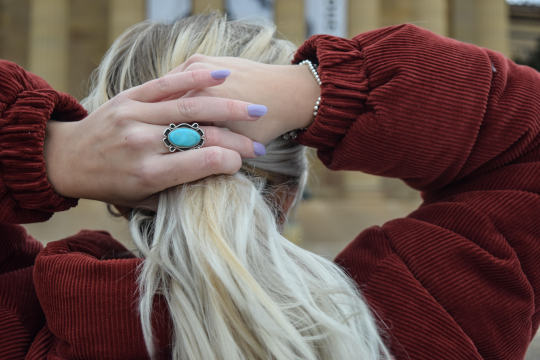
5 notes
·
View notes
Text
Week 11
What were your success and failures?
This week I began experiment with shooting hands for the final photo series. I did some practice shots of my parents’ hands, holding objects and doing simple tasks with their hands. Even with a lot of research and ideas guiding me, I found it really difficult to communicate what I want to capture to the subject, and then have them execute it as desired. I am thinking that being able to show the subject with my own hands what I am looking to photograph rather than staying behind the camera and instructing, will be a better approach to this type of photo. I failed to be super interactive with my subjects in my initial shoots, which led to some lack luster photos. When shooting next, I will really instruct and demonstrate what I mean and take a more active approach with my subjects.
What are the issues and ideas that are motivating your work this week?
This week I plan to shoot in the studio to determine whether the controlled studio environment will give me a better result than the florescent lights of my house that I shot my practice hand images in. I took the first step in beginning to shoot, and I am looking to learn tips that make my images stronger with every shoot. Since I have already found that positioning and shooting hands is extremely difficult, I plan to practice a lot and look at more images by photographers who have successfully done what I am looking to accomplish in my final photo series.
What artists are you looking at? How do these relate to the work you are making?
I favorited a lot of images of hands that I found on Tumblr and will use them as inspiration for my own photos. I think that shooting in the studio for this project might be interesting to try, as it would create a uniform look to my series. I will experiment with the studio as well as other environments in order to see which images best embody the theme I want to portray in my series. Right now I am debating whether a simplistic background with different hands in different positions would produce a better result than different hands in different environments doing various tasks. With repeated trial and experimentation I will get a better idea of which images are stronger.
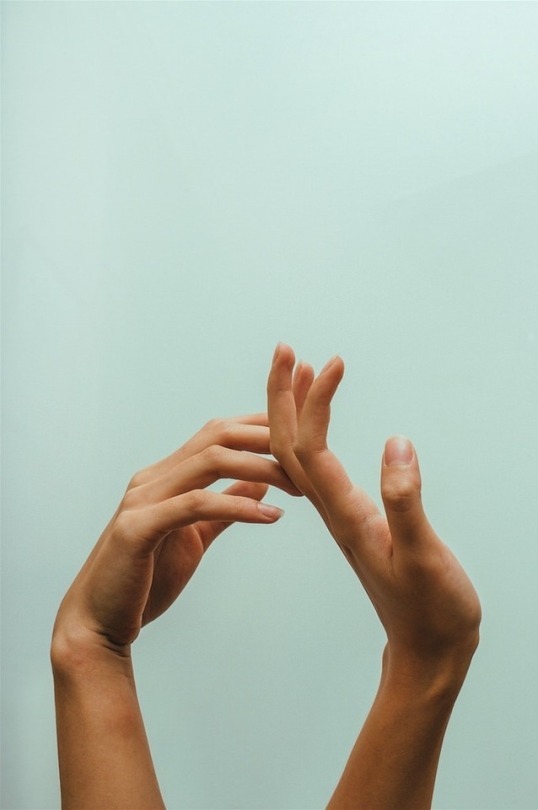
1 note
·
View note
Text
Week 10
What were your success and failures?
I found assignment 3 to be especially challenging. Leaving the critique, I felt that it simply wasn’t my strongest work. I believe my strongest image of the four I displayed in the critique was the mirror showing the metallic streamer. I covered the area that the mirror reflected with a black poster board, so that the mirror reflected a black hole-like portal rather than the studio window. This then made the metallic ribbon pop and gave the image more of an otherworldly feel.
My image with the eye had a slightly awkward composition, as I tried to move the objects really close together to confuse the viewer’s eye. I definitely think that I overthought the abstract aspect of this assignment, as I generally avoid shooting in an abstract way. With Humans of Saint Josephs I am always trying to tell a simple and straightforward story, while this assignment required me to create ambiguity. It was very much out of my comfort zone, but I think I learned a lot from the project.
Key Takeaway: Don’t forget the basic rules of composition when trying to shoot in an abstract way.
What are your responses and conclusions regarding the previous class critique of your work? Was it or was it not helpful?
Seeing my classmates work allowed me to see a range of creative approaches to the assignment. Some chose simplistic subject matter, while others chose a more busy and chaotic subject matter. I think that both were successful in specific instances, such as the simple rose and its shadow, lit by a studio light and orange gel, as well as the chaotic looking desk table with many nick-nacks shot with a pink gel over the light. The photographers who shot these images took different approaches in the subject matter they wanted to highlight but I believe that they were equally as successful.
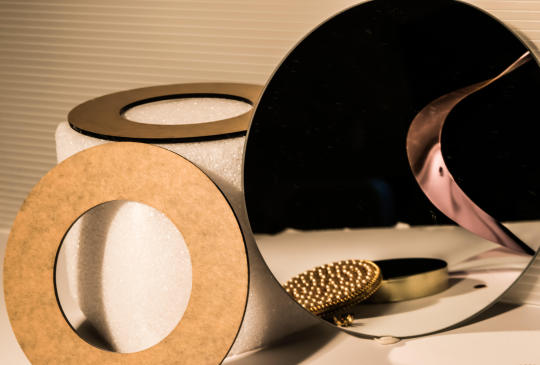
1 note
·
View note
Text
Week 9
What were your success and failures?
This week I was able to shoot in the studio Wednesday during class and also on Sunday. Shooting in the studio is very different from our work so far as you can essentially manipulate the entire photo in terms of subject matter, lighting, etc. This was initially challenging for me, but with practice, a lot of shooting, and making adjustments to the placement of the items in my photos I feel that the end result was successful.
What are the issues and ideas that are motivating your work this week?
This week I plan to edit my photos in a way that enhances the theme of the assignment which is to question the notion of the real. I expect there to be less edits needed than in previous photos, but I think that these edits must be more intentional as they can really alter the effect of the photo since they are more abstract than before.
What artists are you looking at? How do these relate to the work you are making?
I read the article, Abstract Photography for Beginners: 9 Tips for Capturing Stunning Abstract Images, on the Adorama Learning Center website. It highlighted 6 key elements of a good abstract photo: Simplicity, Composition, Angle of View, Lighting, Harmony and Mystery. These qualities are something that I hope to capture within my set of photos for assignment #3. Below is an image pictured with the article that properly demonstrates the 6 key elements of good abstract photography that I previously mentioned.

1 note
·
View note
Text
Week 8
What were your success and failures?
This assignment was much more challenging for me. I didn’t have a clear vision of what I wanted to capture going into shooting this week, and this assignment requires extensive thought and preparation in advance. With the minimal number of shooting spaces and materials, I was not able to shoot this week, but I learned a lot from watching my classmates experiment with light and subject matter. A lot of fine tuning and attention to detail is necessary in perfecting such a constructed and posed shot, and I was able to see that in observing my peers.
What are the issues and ideas that are motivating your work this week?
This week I am going to shoot in the studio during class time, and also come in outside of class. I am hoping to experiment during class enough to solidify my ideals and goals for the assignment, and then come in and get the images exactly how I want them. I have scheduled my studio time and have made a list of every prop I need to get to create the vision I have. One thing I want to achieve is a minimalistic abstraction, so simple forms that are very visually intriguing. I noticed that the majority of my classmates were using a lot of different props and I think a simplistic approach will make my images stand out.
What artists are you looking at? How do these relate to the work you are making?
Keeping this idea of simplicity and minimalism in mind, I did some research. I came across an article by Peter Kolonia on the page Popular Photography that gave me a really interesting idea of a prop to experiment with. He explains how he shoots bubbles in the studio, detailing his preferred exposure and aperture settings. The article also has a diagram of the way he set up the studio for a particular shot of the bubbles that depicts their unique shape and the way they reflect colors. The article was so interesting to me and sparked my interest to try shooting bubbles for this next assignment.

0 notes
Text
Week 7
What were your success and failures?
I believe that my portraits showed major improvements from the first assignment. I much preferred shooting people over objects or landscapes, and I think that these images were more thoughtfully composed. Before I printed, I increased the exposure of all my images slightly because I didn’t like how my last set of photos printed darker than they appeared on my screen. This is a habit I plan to continue as it made such a difference in the printed set of images I showed during this critique. One aspect I felt I could have improved upon was capturing more emotion and telling more of a story in my portraits. I mentioned that I am used to taking portraits and captioning them for my Humans of Saint Joseph’s blog/instagram, and this assignment showed me that I sometimes rely on that caption to finish the story. With practice I hope to be able to tell my subject’s story with just the image, by evoking more emotion and capturing it through the lens.
What are the issues and ideas that are motivating your work this week?
This week I hope to continue to improve upon the last set of images. I think this week will be more challenging for me because the shots are going to be so posed and thought through before hand. This being said, I am already brainstorming creative ideas because these shots will require more planning and precision in composition in order to capture something that challenges the notion of the “real”.
What artists are you looking at? How do these relate to the work you are making?
I recently saw a photo that challenged my perception of reality through creative use of props and placement. The image is by Martin Waldbauer, and put me in the right framework of thinking for our next assignment. In the photo, there is a glass of water, with the reflection of a face that is distorted in the water. Behind the glass is an arm that lays loosely across the table that the glass in sitting on. It is an eerie black and white photo that I am still puzzled by. I really like how strong the image is in evoking an unsettling feeling.
What are your responses and conclusions regarding the previous class critique of your work? Was it or was it not helpful?
I took some really important tips away from this past critique. The first thing that the class agreed on was that I should have included a little more of the environment my redheaded subject was in, rather than just focusing on her. I didn’t even think to step back to get more of the background as I wanted to showcase her vibrant hair, but I think getting more of the environment would have made the image a lot more interesting and tell more of a story. We agreed that two of my photos had a clear story to them, while the other two were a little more ambiguous. I hope that all of my images for assignment 3 creatively fulfill the expectation of challenging reality.
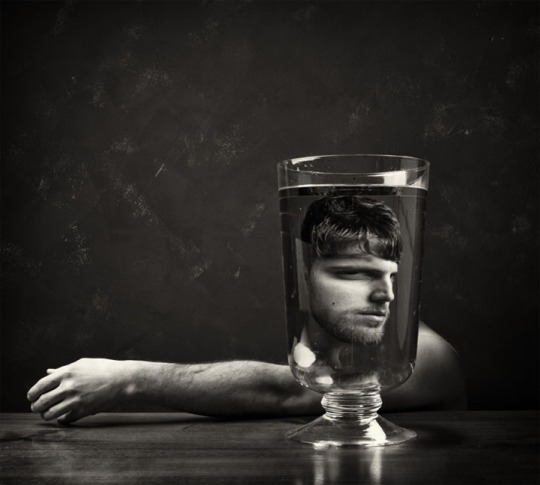
0 notes
Text
Week 6
What were your success and failures?
This week I focused on editing my portraits, as the critique is next week. I found that I am getting more comfortable shooting images, but that I still have a lot of work to do with the editing component. I feel that I am very capable of using the tools in lightroom now, but sometimes when I look at the image I have to mess around with the image for a while to see the final result that I am looking for. I begin by correcting the white and black points like we went over in class, and then usually adjust the exposure if needed. I understand that every photo needs different edits, but I think if I develop more of a routine or steps to follow in editing an image, I will be able to see the desired result more efficiently. In the upcoming weeks, I hope to develop this routine and to get a better eye for editing, so that it comes more naturally and instinctually.
What are the issues and ideas that are motivating your work this week?
I found it challenging to fully communicate the story of my subjects through a single photo.Some of my final images definitely reflect the story within the image better than others, and I think the most determining factor of that is the setting and environment.The image of the little boy in the hair salon has a clear setting, and his uneasy mood is easily understood by his authentic expression. The image of my red headed cousin is one of my personal favorites, because I feel like it gives the audience insight into her personality in a more unconventional way. Because I know her so well, I see how her quirky personality shines through just in her expression, but the message I wanted to express is more symbolic and understated. The white background is so plain and doesn’t tell any story in and of its own, but it enhances her red hair which speaks to her quirky personality, comfort in her own skin and her true individuality.
What artists are you looking at? How do these relate to the work you are making?
I read an article online titled, Telling a Story with Portraits by Thomas Boyd, and found that it applied directly to our portrait assignment. Boyd writes, “The most meaningful portraits tell a story; they not only memorialize a person at a specific time and place, they give us insight into that person as well.” He explains that as a documentary photographer, his goal is to tell the truth about that person through an image rather than making the person look better than they normally do. I often have to reassure my subjects of this concept when taking their photo for Humans of SJU, as many are initially hesitant in getting their photo taken on the spot and ask me if they can do it another time when are more prepared. I always explain that Humans of SJU is a page that highlights a person as they are in a natural environment, and that recreating the photo on another day might not produce as candid of a result. They usually understand what I mean after explaining it in that way, and agree to having their photo taken right then and there.

1 note
·
View note
Text
Week 5
What were your success and failures?
This week I wanted to shoot a lot more portraits so I have a wide selection to choose my four best from. We had a cheerleading team photo this Wednesday, so I thought it would be the perfect opportunity to capture one of my teammates in uniform and in the environment that they cheer in. However, when I went to shoot the portraits of my cheer teammate, my battery quickly died and I didn’t get as many shots as I would have liked. Luckily, I did end up getting a handful of really great images of my teammate Bella standing in front of the Hagan Arena bleachers before my shutter was disabled. I learned the importance of keeping my battery charged, because a photo opportunity could arise when I least expect it and I could miss out on a great shot.
What are the issues and ideas that are motivating your work this week?
Last week, I captured some portraits of my red-headed cousin against a stark white background, emphasizing the rich color of her hair. I was immediately excited to edit and enhance this color in Lightroom. This week in class I was able to work with the portraits and bring out the beautiful red color in her hair, without making it look unnatural or distracting.
What artists are you looking at? How do these relate to the work you are making?
I read an article in Format magazine that described a photo series called Red by Fabio Rodrigues, documenting redheads. I drew a lot of inspiration from this series as they all wore simple clothes and were positioned in front of a plain white background, so that the color of their hair was the clear focus of the image. I tried to recreate a similar shot with my redheaded subject and was really pleased with the outcome.
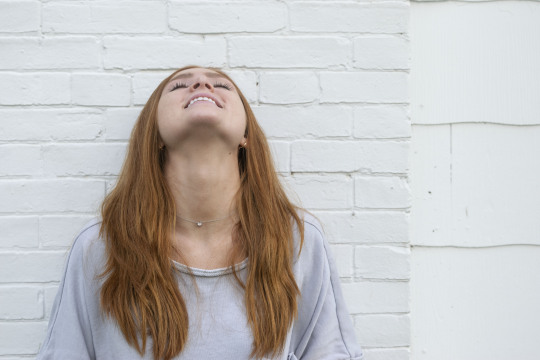
1 note
·
View note
Text
Week 4
What were your success and failures?
This week I was successful in contacting my subjects, thinking through my ideal shot for each and beginning to shoot my portraits. The first portrait I shot is of my cousin, who I chose to photograph because of her vibrant red hair. I wanted to showcase her unique appearance and personality by putting her in a fun and interesting environment as well. Now, looking at the photos, I am anxious to see what the will look like in black and white as well. I am looking forward to comparing color and black and white versions and deciding whether I want to focus on her vibrant hair, or turn up the contrast on her freckles and emphasize them in black and white.
What are the issues and ideas that are motivating your work this week?
Scheduling with my subjects is an issue that I have been working around, but planning in advance has allowed me to coordinate with everyone’s busy schedules. Having my camera settings already adjusted prior to the subject’s arrival also helped keep the shooting process moving along. It gave me more time to focus on posing my subject and getting a better shot in the end.
What artists are you looking at? How do these relate to the work you are making?
I currently run an instagram and blog called “Humans of Saint Joseph’s” where I highlight the diverse individuals here on campus. I drew on some of my inspiration for that page in my portraits for this assignment, trying to convey emotion and a unique story that goes along with each person featured. I tend to rely on the caption that I pair with the photos on my page, to aid the photo in making the person’s message clear. With this assignment, I don’t have the text element that I am used to having accompanying my portraits, which has challenged me to work harder at storytelling with just the camera.
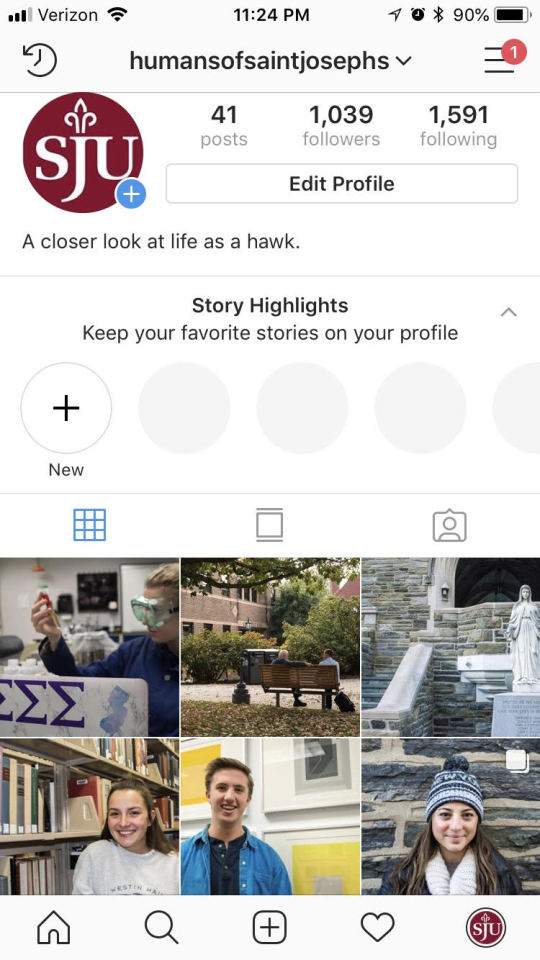
1 note
·
View note
Text
Week 3
What were your success and failures?
This week I feel that I was more successful in both shooting and editing. The more I practice both the more comfortable I feel with the process, allowing me to see significant improvement. One particular tool in lightroom that I feel I am improving with is the brush tool. Now I can adjust the brush to the perfect size for a given area I wish to edit, and can create sharpness, increase exposure, add saturation, or perform any other edit to a particular part of a photo. Before I knew I could adjust the size of the brush tool, my edits weren’t as localized to the area I wanted to edit, and the overall image looked more sloppily edited.
One failure I experienced was something I didn’t notice until the critique. On my computer and camera, my colorful photo for lines appeared to be a clear image, but once I printed it and put it up on the board I could see that the focus wasn’t completely clear when I shot the image. Once the photo was enlarged and in print, the blurry focus was much more noticeable and distracting. It resulted in the image being my least favorite of the images I showed in the critique.
What are the issues and ideas that are motivating your work this week?
I want to take photos keeping in mind how I might want to edit it so the editing process is easier. I also plan to be really mindful of the environment for my portrait photos, in order to tell a story through the image. I hope to have a better idea of what I plan on expressing in my portraits this week, and possibly think of a theme I can develop throughout the photo series.
What artists are you looking at? How do these relate to the work you are making?
I found a really interesting article with images by National Geographic where portraits of identical twins are displayed side by side. I thought this was a really interesting project and thought it was so cool how you could notice the subtle differences in the otherwise identical features of the twins faces. The article then transitioned into a section that highlighted children with their most prized possessions. There is a clear contrast in economic status throughout the images, as some children are depicted with many toys in decorated bedrooms, while others are pictured in rooms that look more like a shack or attic, with only one or few toys. There is a story being told with a strong message that emphasizes an economic divide.
What are your responses and conclusions regarding the previous class critique of your work?
I found the critique to be very helpful, as we all had different comments to contribute to the conversation. My classmates pointed out that my image was blurry and it confirmed what I was personally seeing once the image was printed and displayed. My classmates also noticed that I had overly saturated the sky in one of my symmetry photos. This was something that I did not notice on my own, but once it was pointed out to me in the critique I completely agreed.
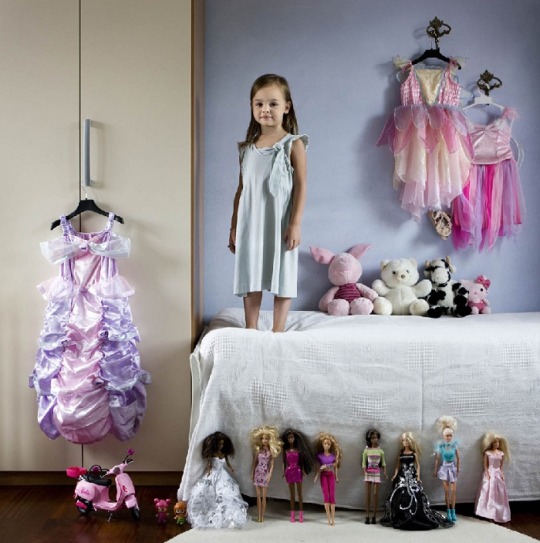
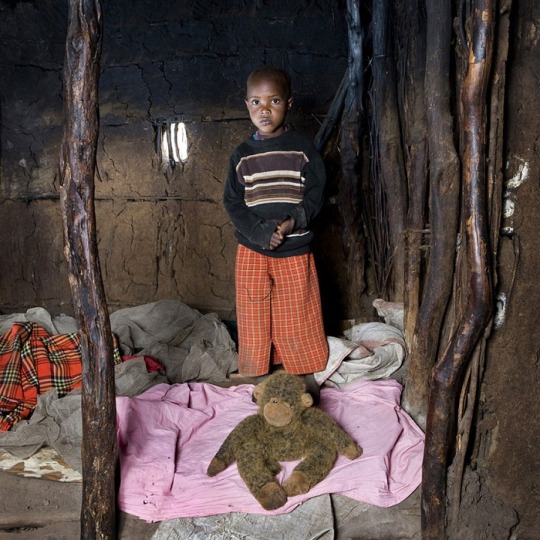
1 note
·
View note
Text
Week 2
What were your success and failures?
My most substantial successes this week were in the process of editing and developing my photos in lightroom. I have had some prior experience using lightroom before, so I quickly became comfortable with its straightforward tools. The images that I took the first time I shot last week weren’t as strong as I would have liked, but when I went back out to shoot I captured much better moments and photos. It made me realize I wont be successful every single time I go out and shoot, but that I need to get my camera out and try again in order to get the quality and quantity of images that I want.
What are the issues and ideas that are motivating your work this week?
This week I pushed myself to shoot a wider range of subject matter. I really tried to find interesting angles and be more creative behind the camera in order to make otherwise boring photos a little more interesting. Then once I edited these photos in lightroom I was able to enhance them further so that they were even more professional and high-quality looking.
What artists are you looking at? How do these relate to the work you are making?
I recently read an article by photographer, Jim Zuckerman, describing the way he uses leading lines to direct the eye of the viewer. He explains the way a leading line directs attention to the subject and how intentional use of such lines in the composition of an image can be really interesting. He provided some helpful tips about depth of field in images with a leading line as well as the aperture and shutter speed he recommends in certain scenerios. Below is my favorite image he references, and one that I drew inspiration from.
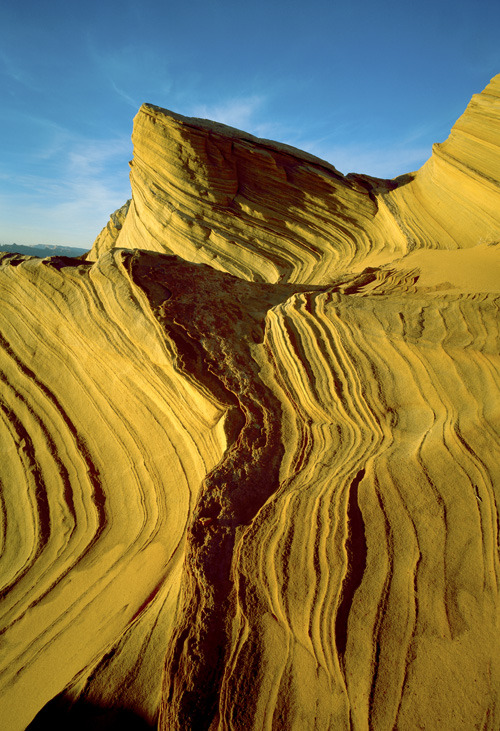
0 notes
Text
Week 1
After our discussion of Henri Cartier Bresson in class, I did some more research on his work and “the decisive moment”. The photo featured struck me as the perfect example of Bresson’s “decisive moment”. Although we are not photographing people in our first photo assignment, I think it perfectly captures the Bresson’s concept that I plan to practice and get a true handle on.
What were your success and failures?
Initially, my most obvious failures were in perfecting the settings and getting the ISO, aperture and shutter in balance. After I got a better handle of shooting in manual, I found it difficult to choose “the decisive moment” that Bresson mentions, and realized that I am used to clicking away and taking multiple photos from the same exact angle and perspective.
What are the issues and ideas that are motivating your work this week?
This upcoming week I plan to shoot more, but to shoot with more intention and purpose, waiting for the decisive moment that Bresson’s work exemplifies. Now that I know the fundamentals and basic workings of my camera, I can get much more creative. I hope to explore new and fun subject matter, experimenting with depth of field.
What artists are you looking at? How do these relate to the work you are making?
As I mentioned before, I drew inspiration from Bresson’s work this week. I found a funny light-hearted quote from Bresson that I related to while reviewing my first collection of images. Bresson says, “Your first 10,000 photographs are your worst”. This gave me a little hope and helped me realize that it’s okay that I haven’t quite perfected the process yet, and that with practice I will improve.

0 notes